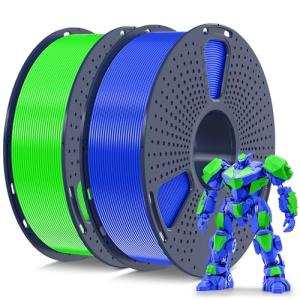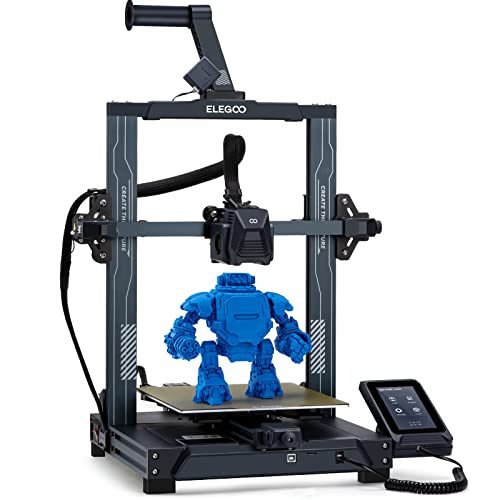When it comes to 3D printing, choosing the right 3D printer filament can make all the difference. Each type of filament has unique qualities that affect the final product, so it's important to know what options are available. Let’s dive into some popular types of filaments.
PLA (Polylactic Acid) is one of the most common 3D printer filaments out there. It's super user-friendly, great for beginners, and comes in a range of colors. PLA is biodegradable, which makes it an eco-friendly choice. Just be aware that it can be less heat-resistant than other materials, so avoid placing your prints in hot environments.
ABS (Acrylonitrile Butadiene Styrene) is another popular option. It’s a bit tougher than PLA and can handle higher temperatures, which makes it perfect for functional parts. However, ABS can emit fumes during printing, so a well-ventilated area is a must. If you're after durability and strength, this might be the filament you want.
TPU (Thermoplastic Polyurethane) is a flexible filament that’s great for projects that need some stretch. It's often used for making phone cases or other items that require a bit of give. Printing with TPU can be a challenge, so it's best suited for those who have a bit of experience under their belt.
Finally, there’s PETG (Polyethylene Terephthalate Glycol). This 3D printer filament combines the best of both PLA and ABS. It’s strong, durable, and resistant to moisture. PETG is a fantastic choice for those looking to print items that need to withstand wear and tear while still being easy to work with.
How to Choose the Right Filament
Choosing the right 3D Printer Filament can feel a bit overwhelming, especially with so many options out there. But don’t worry! Let’s break it down into easy steps that make sense. First things first, think about what you want to create. Are you looking for something sturdy, flexible, or maybe even colorful? Your project will guide your filament choice.
Next up, consider the material properties. Common choices like PLA are user-friendly and great for beginners. It’s easy to print with, biodegradable, and comes in a ton of colors. On the other hand, if you need parts that can handle heat better, ABS might be your go-to. Just keep in mind, ABS can be a bit tricky to print.
If your projects require specific features, look into specialty filaments. Flexible filaments like TPU are awesome for things that need to bend or stretch. And for the tech-savvy, there are composites like carbon fiber-infused filaments which offer added strength without being super heavy.
Lastly, don’t forget about compatibility. Always check if the filament you’re interested in works with your printer. Some materials need a heated bed or specific nozzle temperatures. You want your 3D Printer Filament to work smoothly with your machine, so doing a little homework pays off!
SUNLU PETG 3D Printer Filament Bundle, Accurate Dimension, Blue+Green
Enhance Your 3D Printing Experience with High-Quality SUNLU PETG Filament in a Striking Blue and Green Bundle
Product information
Product Review Score
4.44 out of 5 stars
112 reviewsProduct links
Storage Tips for 3D Printer Filaments
Storing your 3D Printer Filament the right way is super important to keep it in good condition. Filaments can absorb moisture from the air, which can mess with your prints. So, let's dive into some simple storage tips to keep your filament fresh and ready to go.
First off, always keep your filament in a cool, dry place. A closed cabinet or drawer works nicely. If you live in a humid area, consider using silica gel packets in the storage container. These little guys soak up moisture and can help protect your filament.
Using airtight containers is another smart move. Vacuum-sealed bags or containers with airtight seals can significantly extend the life of your 3D Printer Filament. Make sure to keep them sealed when you’re not using the filament. This will ensure it stays dry and won’t get damaged by dust or other contaminants.
Labeling your filament is also a good idea. When you have several colors or types, it’s easy to get mixed up. Write down the material type and color on the container. This way, you won’t scratch your head trying to remember what you have on hand.
Lastly, always check your filament before a big print. If it feels brittle or has a weird texture, it might be time to toss it. Keeping an eye on the condition of your 3D Printer Filament helps you avoid frustrating print failures down the line.
Creality 405nm UV Curing Resin for LCD Printers
Get smooth, high-detail prints with this easy-to-use UV curing resin designed specifically for LCD printers
Product information
€13.02
Product Review Score
4.24 out of 5 stars
100 reviewsProduct links
Common Printing Issues and Solutions
When you're diving into the world of 3D printing, you might hit a few bumps along the way. Don’t worry, though! Let's tackle some common printing issues and their easy fixes so you can keep printing without a hitch.
1. Poor Adhesion: One of the biggest headaches in 3D printing is when your 3D printer filament doesn’t stick to the build plate. You can solve this by ensuring your print surface is clean. A bit of rubbing alcohol can do wonders. Also, consider adjusting the bed temperature or trying out a different type of adhesive like glue stick or painter's tape.
2. Stringing: If you see thin strands of filament connecting parts of your print, that’s stringing. It usually happens when the nozzle oozes filament during travel. Lowering the temperature a bit can help, or you can enable retraction settings in your slicer software. Play around with these adjustments until you see a cleaner result.
3. Layer Separation: This issue pops up when layers don’t bond well, causing prints to crack or warp. Make sure your printer's settings for temperature are spot on for your chosen 3D printer filament. Increasing the print speed can sometimes cause this, so try slowing it down a bit to improve layer adhesion.
4. Z-axis Issues: Misalignment on the Z-axis can lead to uneven layers, and that’s frustrating. Ensure your 3D printer is properly leveled. You might need to recalibrate it occasionally to keep things right. Regular maintenance can save you from these alignment headaches in the long run.





